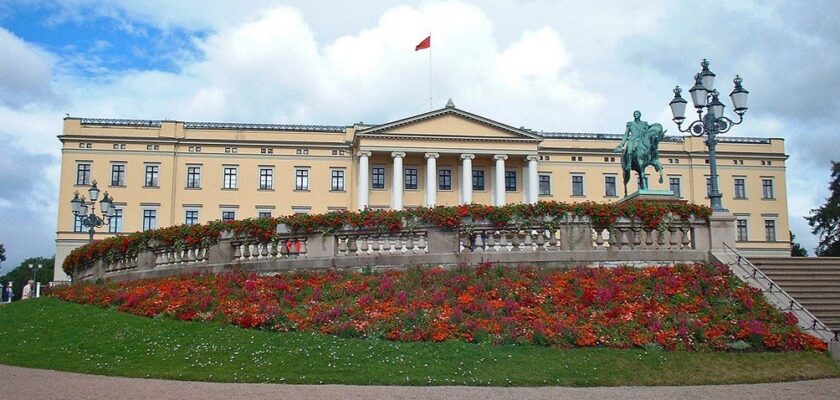Oslo Royal Palace
The Royal Palace in Oslo is located on a small hill called Bellevue at the very end of Oslo’s famous Karl-Juhans Street. Construction of the palace began in 1825 and was not completed until 1849. The first symbolic stone of the palace was laid by King Karl-Johans on October 1, 1825. The construction of the palace was supervised by the Danish officer and architect Hans Dietlef Linstov.
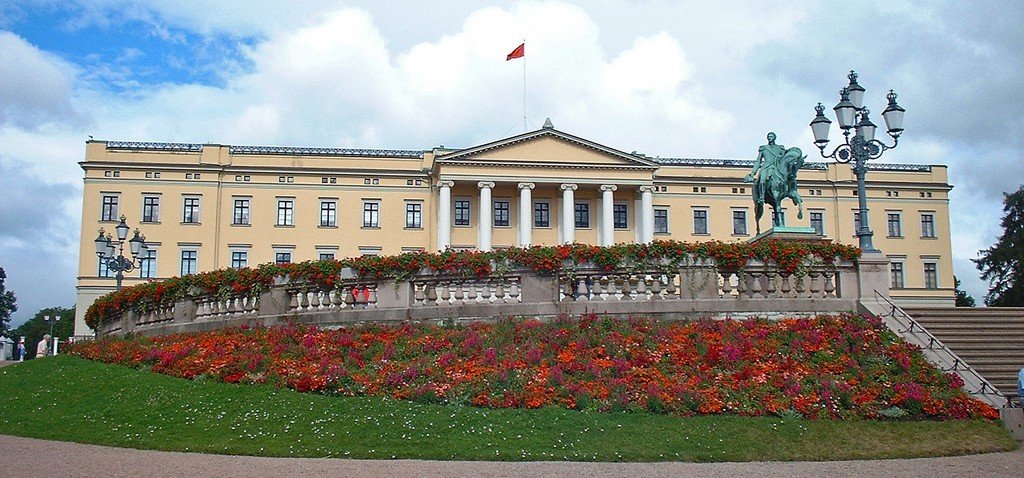
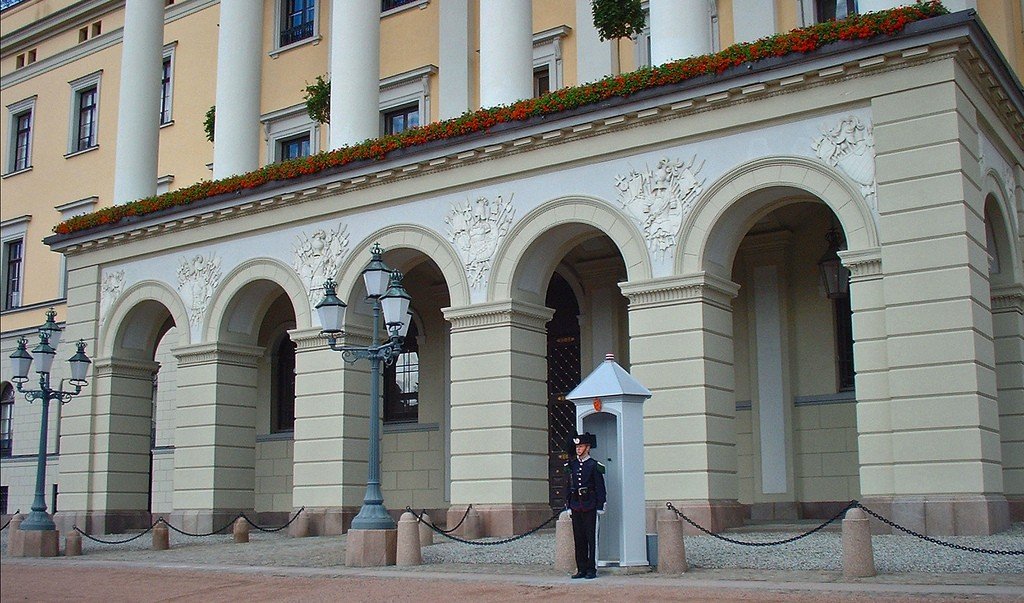
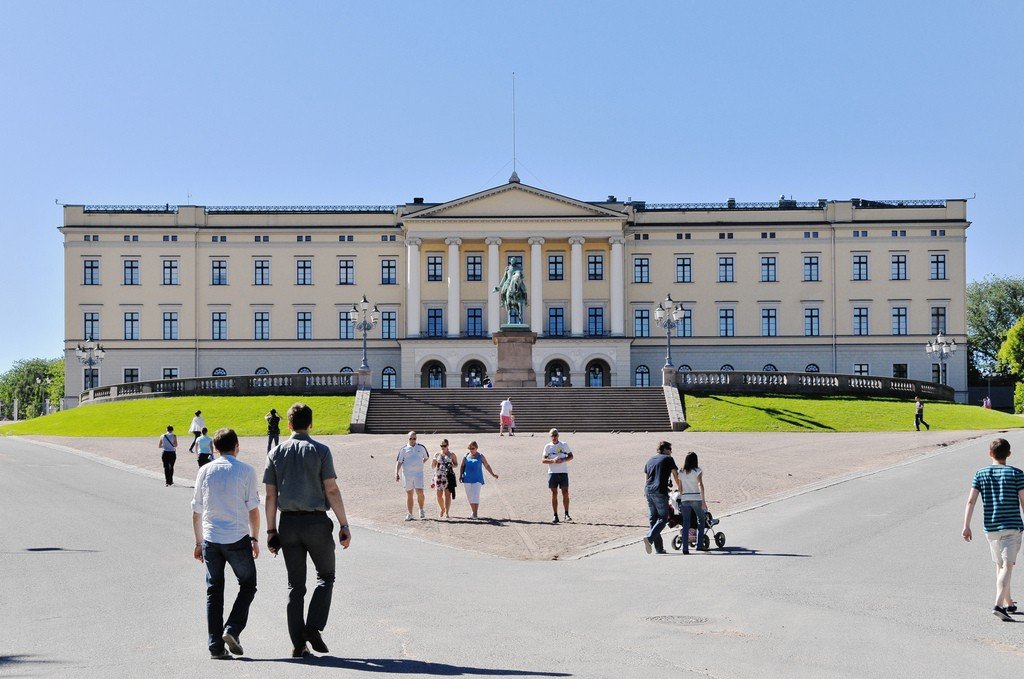
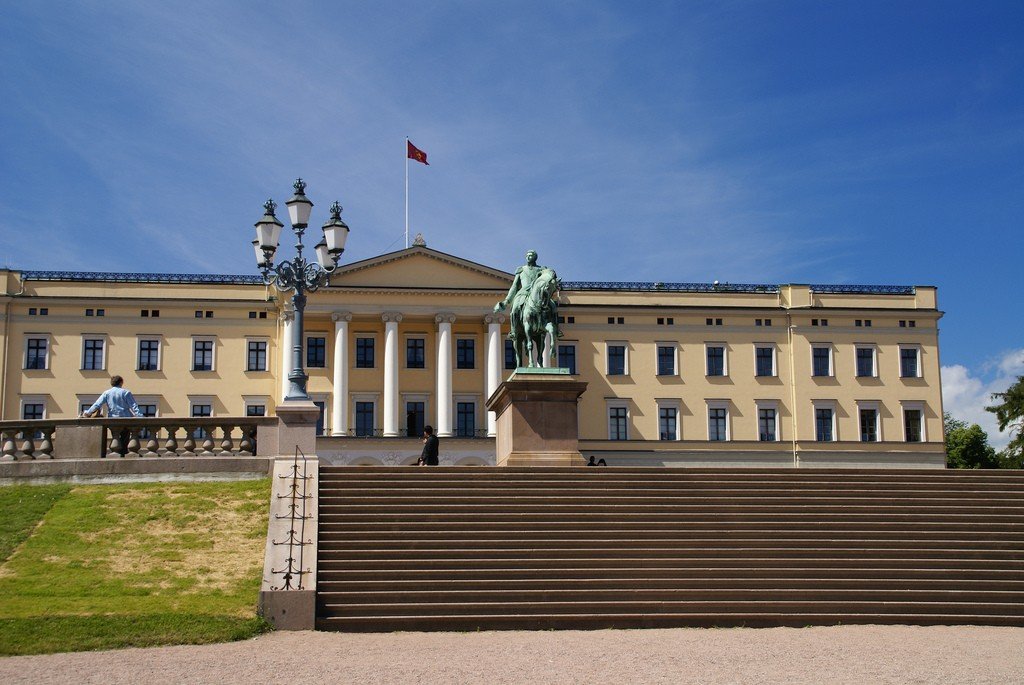
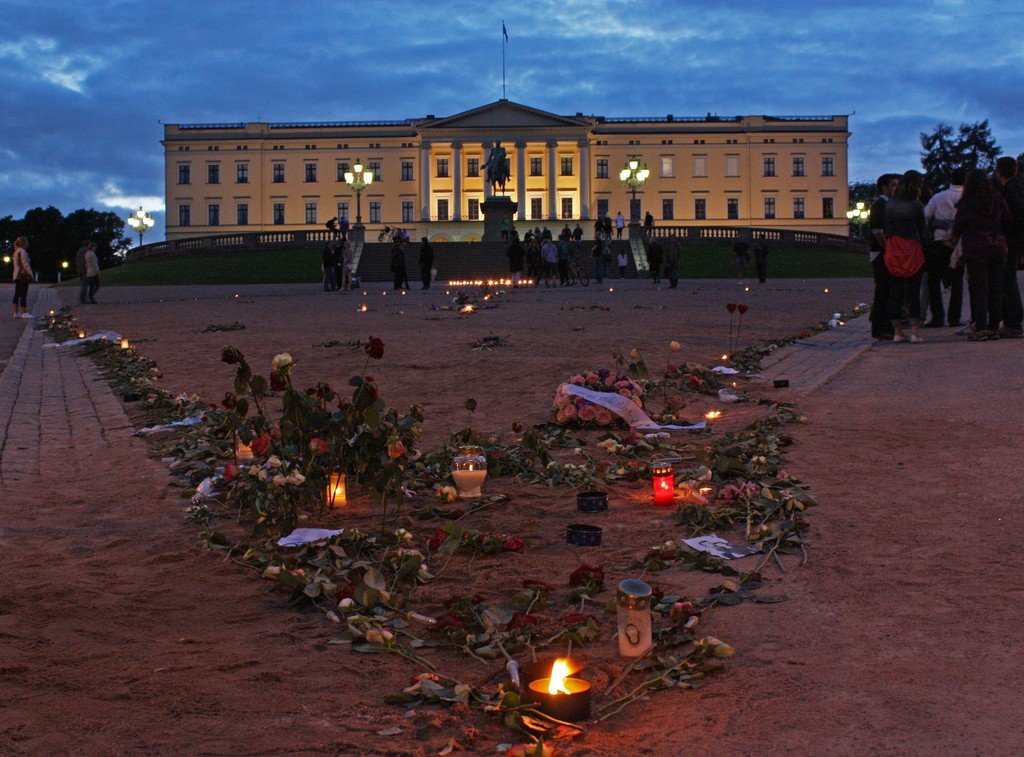
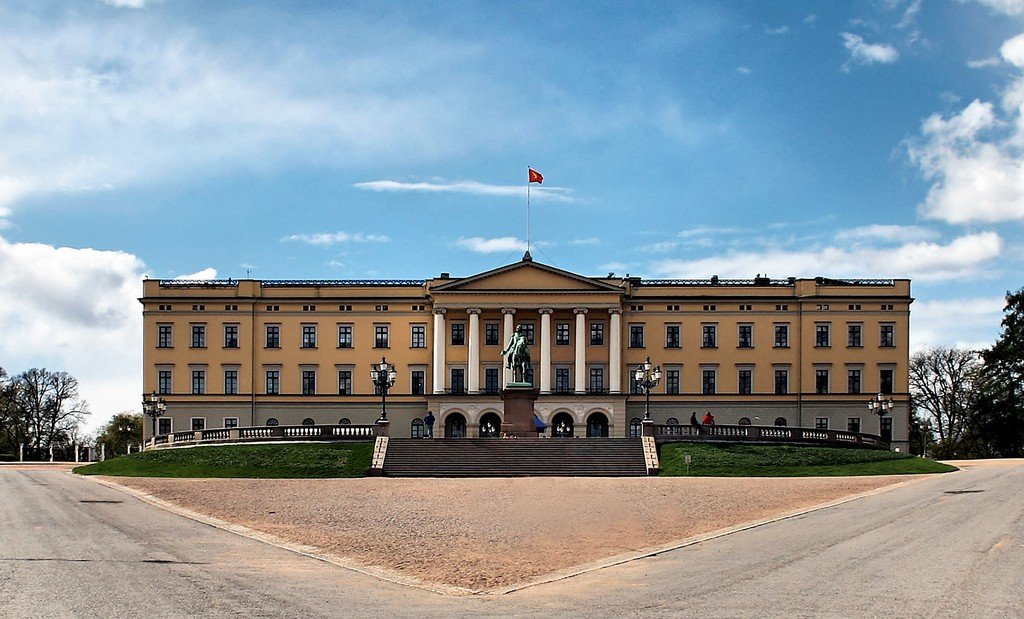
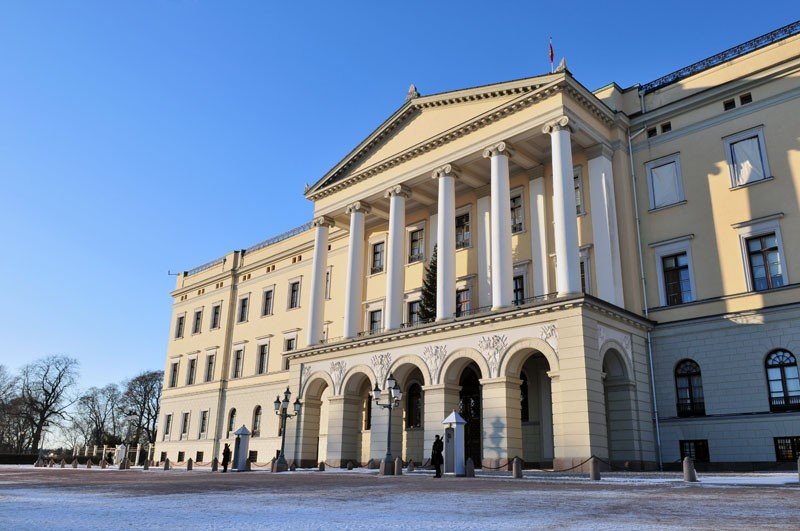
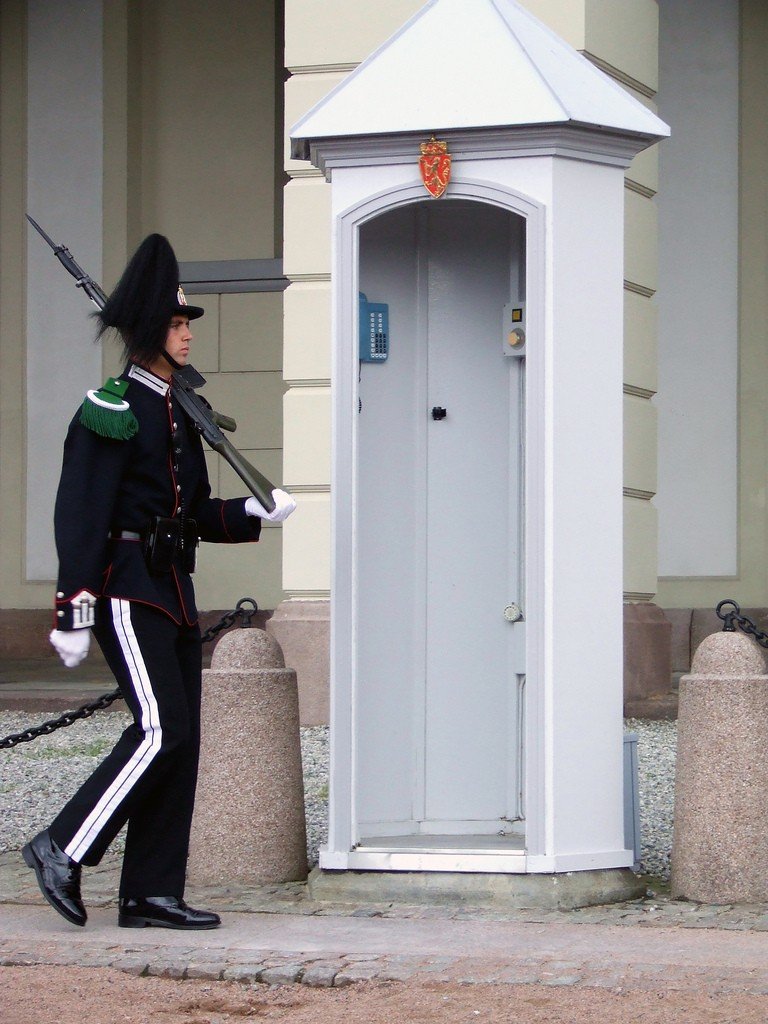
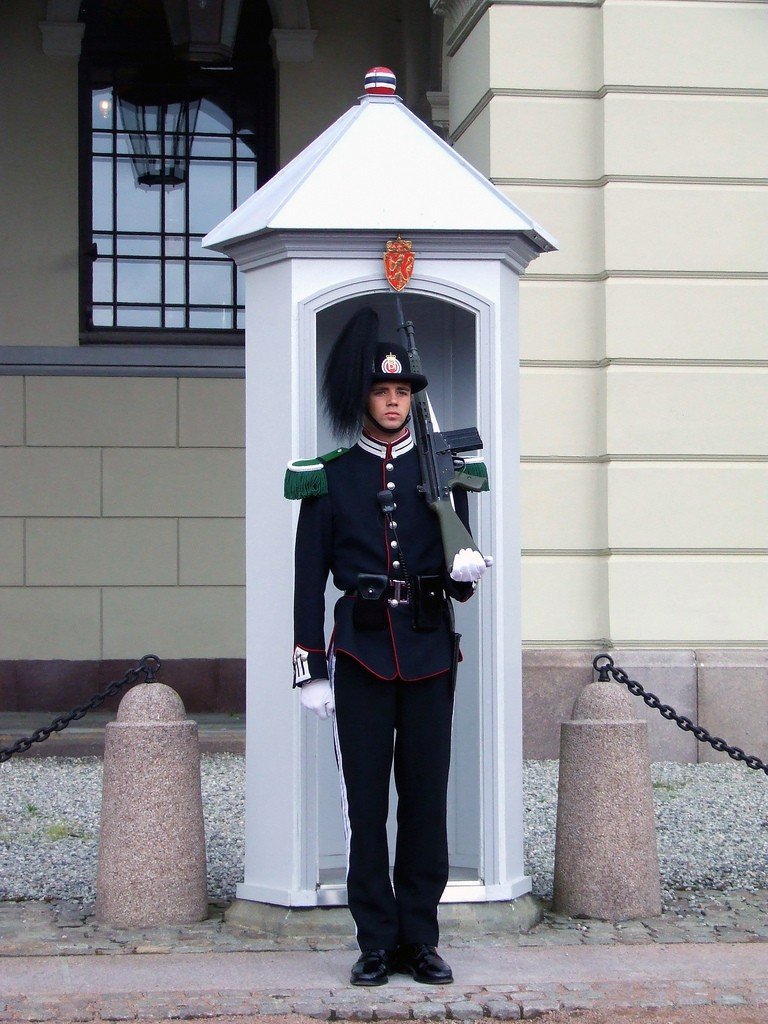
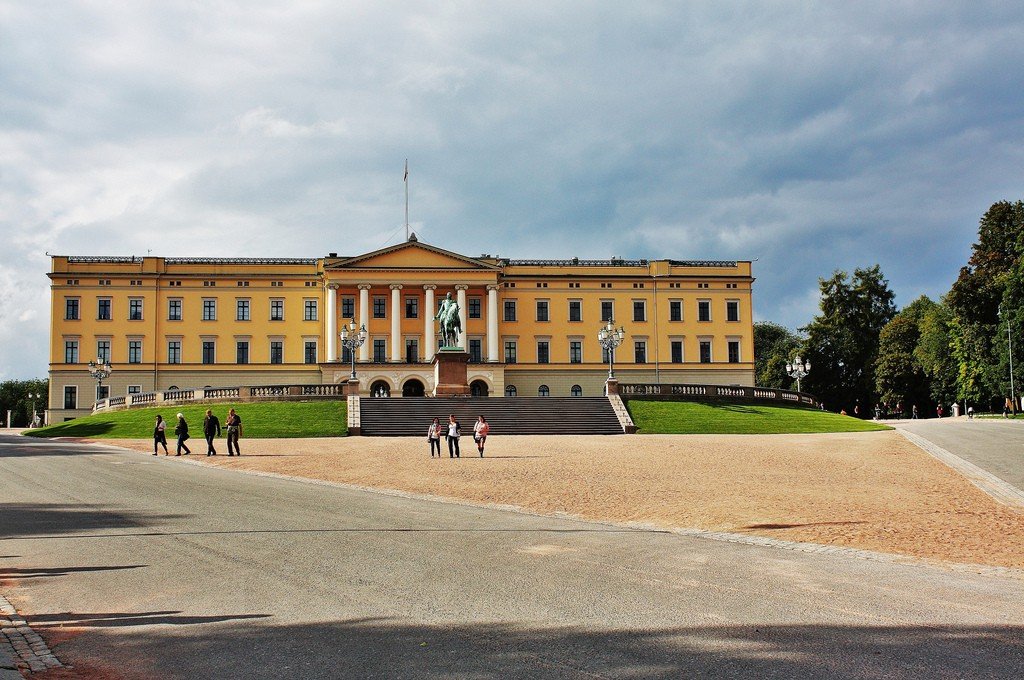
General information
Due to limited financial resources, the construction of the palace was delayed. There were periods when construction stopped altogether. According to eyewitnesses, the architect of the building, Hans Dietlef Linstow, traded vegetables at the market for 7 years in order to make a living.
.
The built palace looks quite modest and has small dimensions: the length of the facade of 100 meters, the width of the facade of 24 meters, the length of the side wings of 40 meters. There are only 173 rooms in the palace. The building is made in the style of classicism. In front of it is a statue of King Carl Johan XIV. In summer, during the season, there are guided tours and interesting exhibitions.
.The lobby of the Royal Palace in Oslo, into which a huge grand staircase leads, is a striking example of Norwegian Classicist architecture. One wall is completely occupied by five tall windows, and a central door leads to a balcony overlooking the main street. The decoration is dominated by marble and the floor is covered with specially designed carpets. The patterns and motifs on the carpets reflect the basic principle of the decoration; architect Hans Linstow, the chief architect, personally designed the ornamentation. He also designed the throne for the king, which was made in Sweden.
.National romanticism and stunning natural scenery are the basis for the waiting rooms where visitors wait for an audience and the royal family likes to be photographed. Here the architect decided to decorate all the walls with Norwegian landscapes. Visitors have the impression that they are in a garden pavilion, through thin pillars covered with hops, the most beautiful corners of Norway can be seen. All this is drawn with amazing accuracy and realism.
.This room is also called the bird room. 40 varieties of birds are depicted on the walls and a white-tailed eagle soars from the ceiling. The specially designed oak furniture for these rooms has been preserved since 1846. The light fixtures were among the first in Norway to be powered by electricity. But the truly major marvel is the palace’s ballroom. Linstow was inspired by the concert hall in Berlin, designed by architect Karl Schinkel. Many of the decorations were brought in ready-made from the German capital.
.Palace Park, one of the first and largest parks in the Norwegian capital, surrounds the Royal Palace on all sides. It is based on the so-called ” ideal model of nature” that prevailed in the mid-19th century, and which set the tone for European gardening of the era. It covers an area of 220 hectares and contains more than 1,000 trees. Ponds, huge flower beds and majestic century-old trees.
History of the appearance of the royal palace in Oslo
Of particular interest is the personality of King Carl XIV Johan and the history of the appearance of the palace. The question arises – where did the kings of Norway live before the construction of this palace in Oslo? And there was no palace at all. Moreover, because of the dynastic crisis, Norway lost state independence by entering the Kalmar Union with Denmark and Sweden in 1397.
.
As a result of this union, the Danish king became both king of Norway and Sweden. And, while Sweden withdrew from the Union of Kalmar in 1521, Norway remained in union with Denmark until 1814. Since the Danish kings spent most of their time in Copenhagen, and in Norway, if they visited, it was short-term, so there was no need to build a royal palace.
.
During the Napoleonic Wars, Denmark was allied with France, so the Vienna Congress of the Allies in 1814 decided to separate Norway from Denmark and join it to Sweden, which participated in the war on the side of the Allies. The Norwegians tried to defend their independence, but as a result of the invasion of the Swedish army, were forced to recognize their dependence on Sweden.
.
As a result, the King of Sweden became at the same time the King of Norway. Of great interest is the personality of King Carl XIV Johan of Norway. This king was not born into the royal family, but was a Marshal of France, Jean -Baptiste Bernadotte.
.
This story got its start in 1806. During the war with Prussia, about one thousand Swedish soldiers were taken prisoner by the French, who were led by Marshal Bernadotte. The humane treatment of the captured soldiers led to the Marshal’s widespread popularity in Sweden. King Gustav IV Adolf’s despotic style of rule, Sweden’s military defeats in the war with France (1805-1807) and Russia (1808-1809), led to the loss of Finland and possessions on the southern shore of the Baltic.
As a result of an organized military conspiracy, King Gustav IV Adolf was arrested on March 13, 1809, stripped of his right to the throne by the Riksdag and banished from Sweden. Gustav IV Adolf’s uncle, who ascended the Swedish throne under the name of Charles XIII, was appointed as successor. However, this was a temporary figure, as Charles XIII was an elderly man and had no children. In addition, by the time he came to the throne, Charles XIII was suffering from dementia and had no real influence on Swedish politics..
After Charles XIII’s official heir Prince Carl-August of Denmark died in an accident, French Marshal Jean-Baptiste Bernadotte was elected heir by the Riksdag with the consent of Napoleon Bonaparte. To comply with all formalities, he was adopted by King Charles XII and given the name Charles-John.
.
As a result, all Swedish politics were conducted by Karl-Joann. Thanks to Karl-Joann, Sweden became part of the anti-Napoleonic coalition. Swedish troops took part in the Battle of the Nations at Leipzig in 1813. After the death of Charles XIII, the Marshal assumed the throne of Norway under the name of Charles XIV Johan.
.
When in Oslo, Carl XIV Johan had to stay in private mansions. Therefore, the king decided to build a palace. The construction of the royal palace in Oslo was completed 5 years after the death of King Carl XIV Johan. Permanent residents appeared in the palace only after Norway’s independence in 1905, when the Danish Prince Karl, who came to the throne as Håkon VII, became king..Practical information
The Royal Palace in Oslo is located at Slottsplassen 1, Oslo.
.Tel: +47 22 04 87 00.
.In summer the tours start every 20 minutes and last about an hour, however, this information concerns tours in Norwegian language (for tours in English or other languages you need to specify additionally in Oslo tour office).
.Opening hours: Mon-Fri and Sat 11.00-17.00, Fri 12.00-17.00.
.While the palace park is open to visitors all year round, the palace itself is only open from June 23 to August 16.
.
Tours cost: 95 NOK for adults and 85 NOK for children.
.